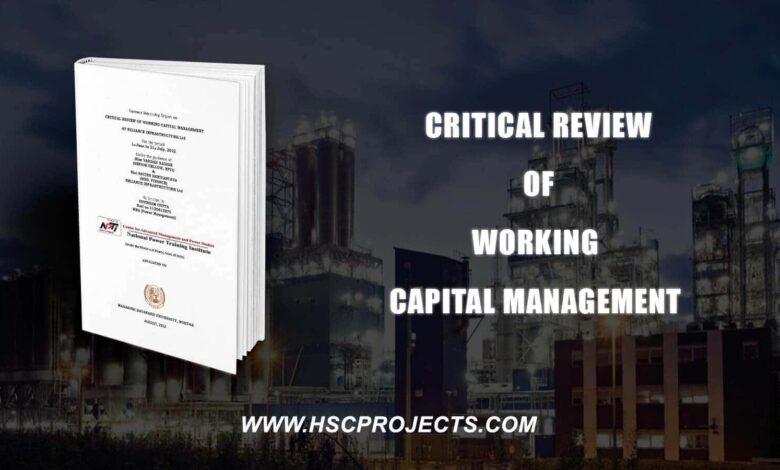
Critical Review Of Working Capital Management At Reliance Infrastructure
Critical Review Of Working Capital Management At Reliance Infrastructure
A well designed and implemented working capital management is expected to contribute positively to the creation of a firm’s value. The purpose of this project is to examine the trends in working capital management (WCM) and its impact on the performance of RELIANCE INFRA Ltd. (RIL) during the last few years. This project aims at learning various facets of working capital management at RIL by studying the day to day activities at its EPC division which mainly deals in power projects.
These projects also draw a comparison between RIL and other prominent players active in the infrastructure segment and tries to find out the reasons playing an active role behind the numero uno status of RIL in the infrastructure segment. Working capital management involves not only managing the different components of the current assets, but also managing the current liabilities, or to be more precise, financing the current assets. A firm is required to maintain a balance between liquidity and profitability while conducting its day to day operations.
Liquidity is a precondition to ensure that firms are able to meet its short-term obligations and its continuous flow can be guaranteed from a profitable venture. The importance of cash as an indicator of continuing financial health should not be surprising in view of its crucial role within the business. This requires that business must be run both efficiently and profitably. In the process, an asset-liability mismatch may occur which may increase firm‟s profitability in the short run but at a risk of its insolvency. On the other hand, too much focus on liquidity will be at the expense of profitability.
There are three main areas in working capital management and the project focuses on the following:
- Receivables management
- Cash management
- Inventory management
By using the financial statements of RIL, an analysis has been carried out to understand the trends that have been followed. Also, a comparative study is carried out with respect to the
company‟s competitors to further understand its position in the market. Based on the above study, certain recommendations are made.
The financial statements (mainly balance sheet along with profit & loss accounts) are used to work out various ratios which help us in better understanding the organization ‟s working capital management. The key variables used in the analysis are inventoried days, accounts receivables days, accounts payable days and cash conversion cycle. These ratios are then compared with the industry’s standard to get an insight to understand the nuances of the working of the organization.
Title – Critical Review Of Working Capital Management
Author – Shubham Gupta
College – National Power Training Institute
In order to download the PDF, You must follow on Youtube. Once done, Click on Submit
Follow On YoutubeSubscribed? Click on Confirm
Download Critical Review Of Working Capital Management At Reliance Infrastructure PDF






